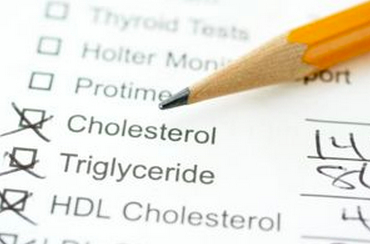A reader recently told me that his doctor did not want to order extra blood tests for his annual visit – but would order one if he had a compelling reason. So he asked me, what was the one test that I’d recommend.
My first thought was to question the voluntary ignorance of the doctor – Wrong decision making occurs when a doctor confidently prescribes or treats based upon excessively limited information: WYSIATI means, What You See Is All There Is. The entire Progress Panel in The Blood Code can be performed at a Direct Lab facility for less than $100. There is little reason to skip this piece of information
On second thought, I took the challenge. The one test that should be run? Insulin.
Your sensitivity or resistance to this anabolic hormone tells an important story about your disease risk. Your fasting glucose and fasting insulin together create a calculation called HOMA-IR. The important part is the “IR,” which stands for insulin resistance. Your insulin test is used to identify your metabolic response to dietary and exercise habits, and their impact on your health. You can go to the bottom of this page and click on the HOMA-IR calculator to assess whether you are heading toward a healthy insulin sensitivity or the disease-state of insulin resistance.
Optimal fasting insulin for adults is quite different than the wide range the lab provides on your report. The first range is for US units and in parentheses is the international S.I. unit.
Low is <3 uIU/mL (<18 pmol/L)
Optimal 3–8 uIU/mL (18–48 pmol/L)
High is >8 uIU/mL (>48 pmol/L)
Simply, look at your absolute insulin level; low, normal, or high.
Low insulin: Labs cannot currently detect insulin lower than 2 uIU/mL. The result is reported as “below detectable limits.” If there is no detectable fasting insulin, <2 uIU/mL (<12 pmol/L), and the blood sugar is significantly elevated, such as with a HgbA1C >6.2% (>44 mmol/L), this could be type 1 diabetes, and should be immediately reviewed by a doctor. There is an adult-onset type 1 diabetes called LADA, sometimes referred to as diabetes type 1.5; more-advanced blood tests, including antibody tests, can help to evaluate for the presence of this condition, and should be done through your health-care provider.
With low insulin, you can readily break down fats that you have stored. In my practice, I see low insulin with:
- people with inadequate absorption of calories;
- people who over-exercise/over-train without adequate time off to recover; and
- people who have chosen a very low-carbohydrate diet, despite having no evident insulin resistance.
High insulin: High insulin on a fasting blood test means you are in an anabolic state—effectively building fat and muscle. High fasting insulin is rare in a thin and frail person. Future risk of type 2 diabetes begins to go up in those with fasting insulin above 8 uIU/mL (48 pmol/L). Uncorrected, high insulin will, over time, result in insulin resistance and lead toward a disastrous list of chronic. High insulin blocks your ability to break down fat – not only does it make more fat, but it locks the door so you can’t use it.
Insulin levels during childhood and pregnancy: It is normal for growing children and pregnant women to have a slightly higher insulin level, up to 15uIU/mL (90 pmol/L). Gestational diabetes is not a condition that happens “out of the blue”; instead, it is the appropriate pregnancy-related elevation of insulin that puts some women over the top of their previously hidden insulin resistance.
Insulin breaks down very quickly in your body, within minutes not hours. Therefore, your baseline insulin is a reflection of your dietary habits and fitness condition. People with low insulin need to carb backload or assure a minimum carbohydrate intake with meals to maintain or build muscle mass. Whereas those with high insulin already have plenty of this tissue building hormone and are well served keeping carbohydrate levels in their Blood Code Diet ranges. There are several nutrients that, if deficient, will results in greater insulin resistance and higher insulin. If you have an elevated insulin, assure that you have the metabolic nutrients that guarantee a healthy insulin response.
You do not need to wonder whether a low carb diet is “good or bad”. And you do not need to have faith that your current exercise is enough to help you live a long and healthy life – you simply need to find out if it is right for you. Only one test to add to your annual physical? Insulin.




Comments are closed.